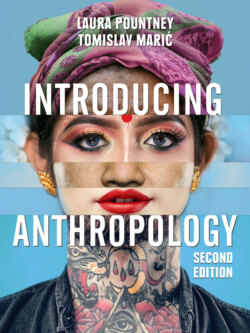Читать книгу Introducing Anthropology - Laura Pountney - Страница 122
Keeping up with the times (Gideon Lasco)
ОглавлениеHere, physician and medical anthropologist Gideon Lasco explores the effects of skin-lightening practices among men in the Philippines (see Lasco and Hardon 2019).
Jose, aged 19, is a college student in Puerto Princesa City, Philippines. On a regular school day, after he wakes up, he takes a shower, scrubbing his body using soap made of papaya (Carica papaya), a fruit that’s said to have skin-whitening properties. Afterwards, he applies a facial whitening lotion, and before finally going to school he uses SPF 30 sunscreen, again with whitening properties, on his face and arms. Jose is not alone in his use of such products. A 2015 study found that the prevalence of skin-whitening product use among male university students in twenty-six low- and middle-income countries was 16.7 per cent. The figure was higher in many Asian countries: 17.4 per cent in India, 25.4 per cent in the Philippines, and 69.5 per cent in Thailand.
Why do Jose and many other young men in many countries want to whiten their skin?
First, it must be pointed that the preference for white skin, even among men, has existed since ancient times. In Heian Japan (AD 794–1185) and Ming China (1368–1644), handsome men were described as having white or pale skin. American anthropologist Nina Jablonski (2012: 167) writes that, historically, ‘untanned skin was a symbol of the privileged class that was spared from outdoor labor … Dark-skinned people were deprecated because they were of the labouring class that worked out in the sun.’ Colonialism lent another meaning to white skin, making it a marker of racial – not just class – distinction.
Today, cosmetics companies, through mass-mediated, star-studded advertising, reflect and reinforce these notions. While it is insightful to look at these historical and global trends, it’s also important to look at the users of skin-whitening products themselves. In the Philippines, many young men are motivated by perceived social and economic gain. Call centre agent Edwin, aged 20, for instance, says that whiter skin will make him ‘more attractive to girls’. Jose, for his part, wants to someday be a flight attendant, saying: ‘If you’re fair-skinned, you’re noticeable, and that gives you an advantage.’
Their assumptions find empirical support in studies that suggest men with lighter skin are more likely to get higher-paid jobs. When young people who do not have academic credentials or social connections have only their bodies as ‘capital’, their pursuit of whiter skin becomes understandable. But from a public health perspective, the proliferation of whitening products raises questions of efficacy and safety. For all their promised effects, there’s actually no proof that many products actually work, and a lot of them have potentially grave side effects. Mercury, for instance, is a known toxin, but it’s still found in many skin-whitening products.
Alongside these health concerns, the moral debate continues. Is skin colour, which is determined by genes, occupation and lifestyle, becoming another layer of inequality thanks in part to skin-whitening products? By illuminating the perspectives and lived experiences of people who lighten their skins, anthropology can help us understand the phenomenon of skin whitening – and the meanings of (un)fair skin.
